The United Nations’ refugee agency is repairing Ukrainian homes damaged by Russian attacks, but they need to be built back to a better standard than before the war, says project lead Richard Evans in this interview.
Richard Evans, the emergency shelter and housing lead for the United Nations High Commissioner for Refugees (UNHCR), is working in Ukraine to help rebuild homes damaged in the war triggered by Russia’s invasion in February 2022.
While this is a mighty task in itself, Evans has set out to restore the homes to a standard that exceeds that of before the war.
“We are trying to improve the housing stock as we go,” he told Dezeen.
The latest rapid damage and needs assessment, published in February this year by the World Bank, stated that more than two million housing units in Ukraine have been destroyed or damaged during the conflict.
Rocket attacks on the country continue after more than two years of Russia’s invasion. On 8 July, Ukraine’s largest children’s hospital was struck in one of the heaviest attacks on Kyiv since the start of the invasion.
The UNHCR has continued to rebuild housing across the country, so far repairing over 29,000 private homes.
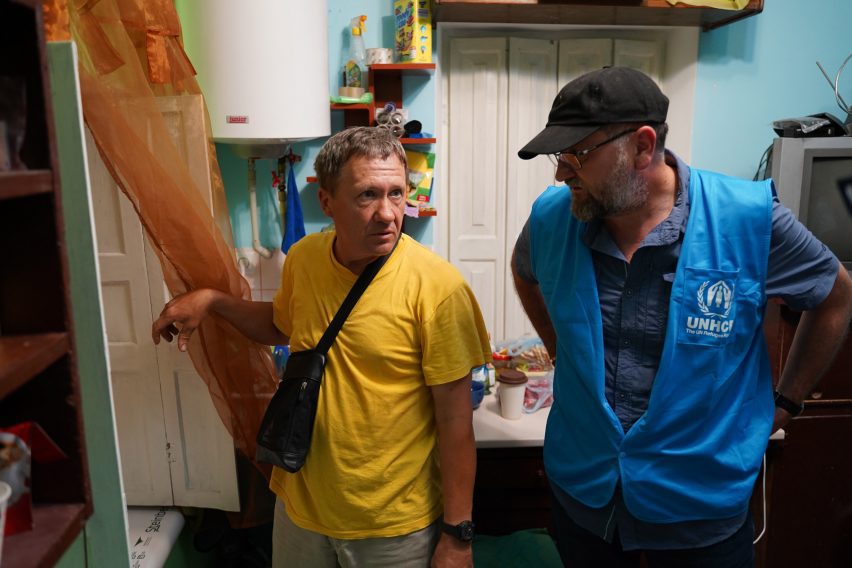
“When the Russians launched the full-scale invasion in February 2022, they came in from the north and tried to encircle Kyiv and they failed,” said Evans. “They destroyed lots of housing on their way in and again on their way out – that’s where we started our house repair work because it was away from the front lines and easily accessible.”
“Ukraine is hit by missiles, drones or shelling every day,” he continued. “I’ve worked in Iraq, Libya and Lebanon and seen a lot of conflict-related damage, but I’ve never seen anything to this scale.”
“As fast as we can repair the housing stock there are more getting damaged, but for those people whose homes we have repaired and who have been able to remain in or return to their homes, this means so much to them.”
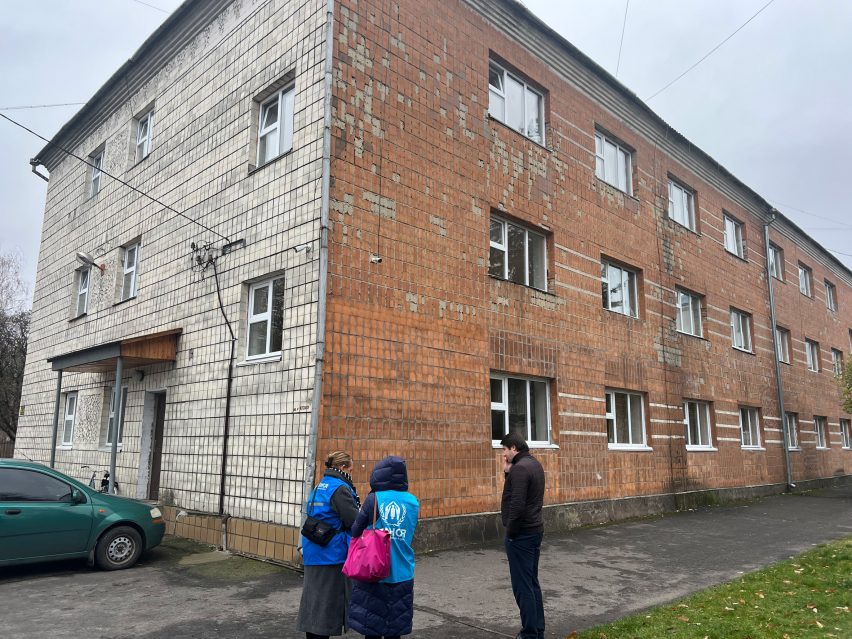
The UNHCR has set out multiple methods of rebuilding houses, but the majority have involved agreeing with homeowners on the repairs that are needed and then hiring a contractor to carry out the work.
According to Evans, many of the homes were in poor condition before being damaged by warfare. This meant that building back to the standard they were before would not suffice.
He explained that in many cases, he was dealing with homes built during communist rule that had never been updated, so part of the repair works would include fitting 2023 code triple-glazed windows and insulation to help protect residents from the harsh Ukrainian winters.
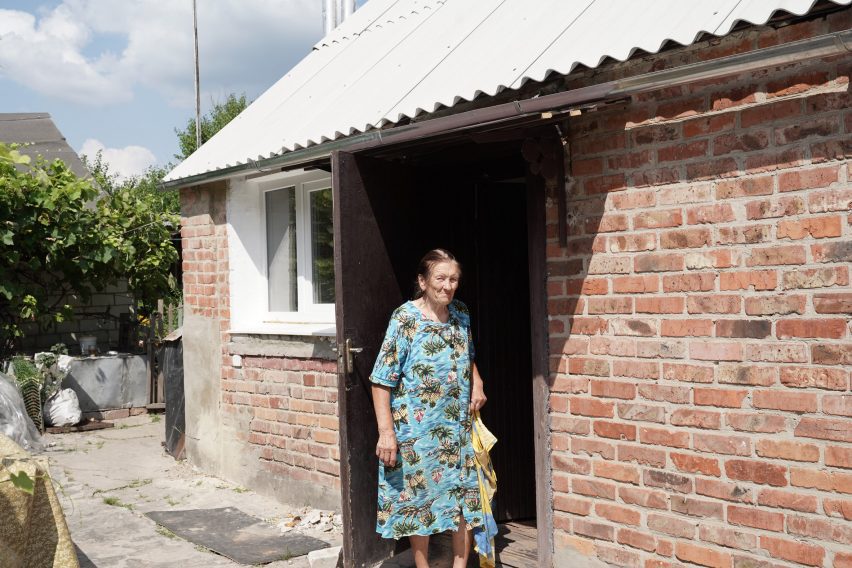
“Ukraine had a shortage of affordable and adequate housing before the war,” said Evans.
“The majority of the housing stock was very old – 80 per cent of the buildings were built in the Soviet USSR period, that’s up until 1991, and 40 per cent of Ukrainians were living in houses that had never been renovated.”
“We sign an agreement, a contractor will arrive and your house will be fixed to the standard it was before, but we also try to build back better,” he added.
In addition to directly organising the work, the UNHCR offers other repair methods, aiming to give Ukrainians some control over how they receive aid.
Homeowners can be provided with materials to self-repair their homes or given financial aid to organise a contractor and materials themselves.
“These three methods work together and try to put the person who’s been affected in the driving seat,” said Evans.
“A lot of the people in rural areas are builders or work in agriculture – you can imagine there’s nothing worse than having someone else deciding on your assistance.”
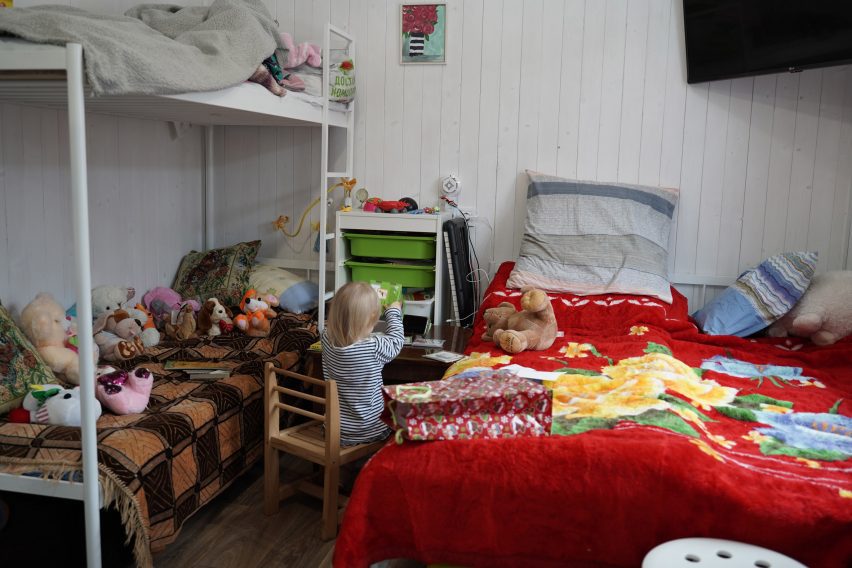
For homes that have been fully destroyed, the UNHCR put together the CoreHome programme, which works with Ukrainian manufacturers to build prefabricated homes.
The prefabricated structures are built on the homeowners’ land, sometimes next to their damaged homes, again aiming to give authority and agency to the people affected.
“This way, we could provide people with a solution on their own land, adjacent to their existing damaged house, so we’re not taking away their ambition to rebuild their homes,” said Evans.
“Pre-war, Ukraine was an exporter of prefabricated panels and prefabricated homes into Europe, mainly Poland and Germany, but that industry was knocked down by the war,” he added. “We found a company that had shut down and they were willing to reopen if we put an order with them.”
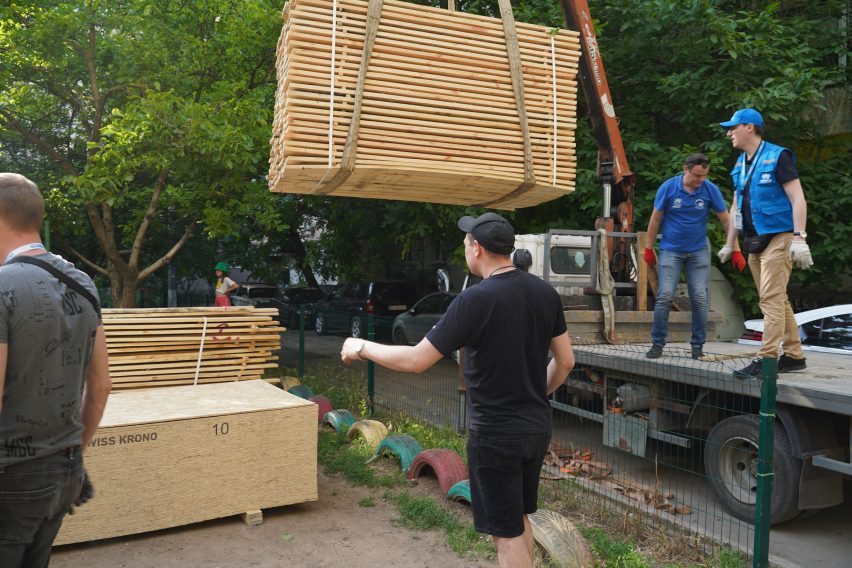
According to Evans, almost four million people are internally displaced in Ukraine because of the war. Many of those whose homes have been destroyed are living in collective sites, such as university accommodations and sanatoriums.
The UNHCR has worked on almost 250 collective sites like these to make them more suitable for longer-term living. This includes small interventions such as segregating bathrooms and fitting kitchens, as well as major renovations.
However, Evans stressed that these sites are still not adequate for the long term and advocated for social housing and affordable homes.
“[Ukraine] didn’t have enough social housing because a lot of it was sold in the 1990s to boost home ownership,” he said.
“[Our work on collective sites] has helped improve conditions for many displaced people, but as these places are not really meant for long-term living, we are looking to get people into more sustainable housing, for example, the rental market or by helping local authorities establish social housing.”
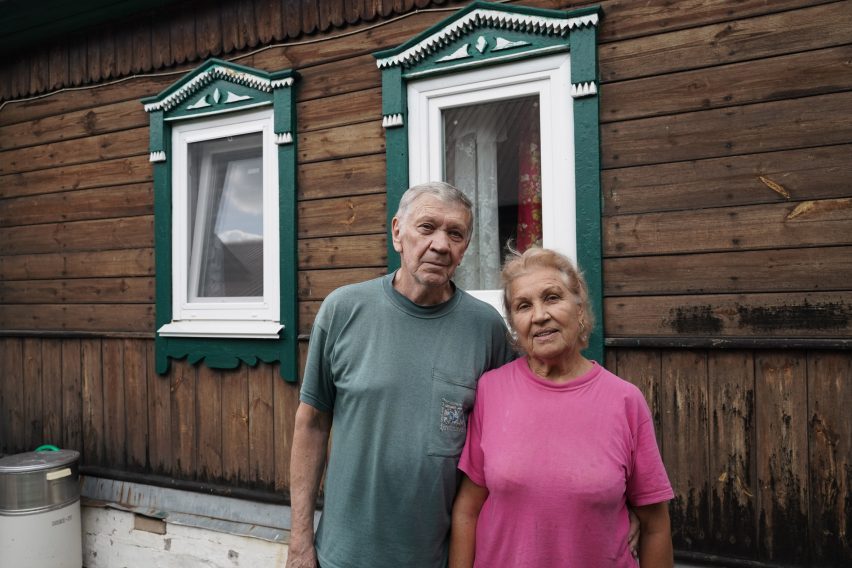
“We came across many houses in the rural areas that were abandoned that we can renovate for very little money,” he continued.
“One of my colleagues found an abandoned canteen which we are now turning into apartments to then give back to the local council or municipality to manage and which can then provide affordable housing for internally displaced people.”
With each initiative set out by the UNHCR, it hopes to create stable living arrangements for Ukrainians.
“We use the term ‘durable solutions’ – it’s about finding a long-term solution for displaced people,” said Evans.
“Classically, it’s about integration and inclusion into your new local community. Here in Ukraine, there are some areas of the country people might never be able to go home to if their villages and homes are completely destroyed.”
To mark two years of conflict in Ukraine in February, Dezeen asked architects and designers in the country about how they are coping during wartime. We have also spoken to Palestinian architects about their hopes of helping to rebuild in Gaza.
The photography is courtesy of the UNHCR.
Dezeen In Depth
If you enjoy reading Dezeen’s interviews, opinions and features, subscribe to Dezeen In Depth. Sent on the last Friday of each month, this newsletter provides a single place to read about the design and architecture stories behind the headlines.
